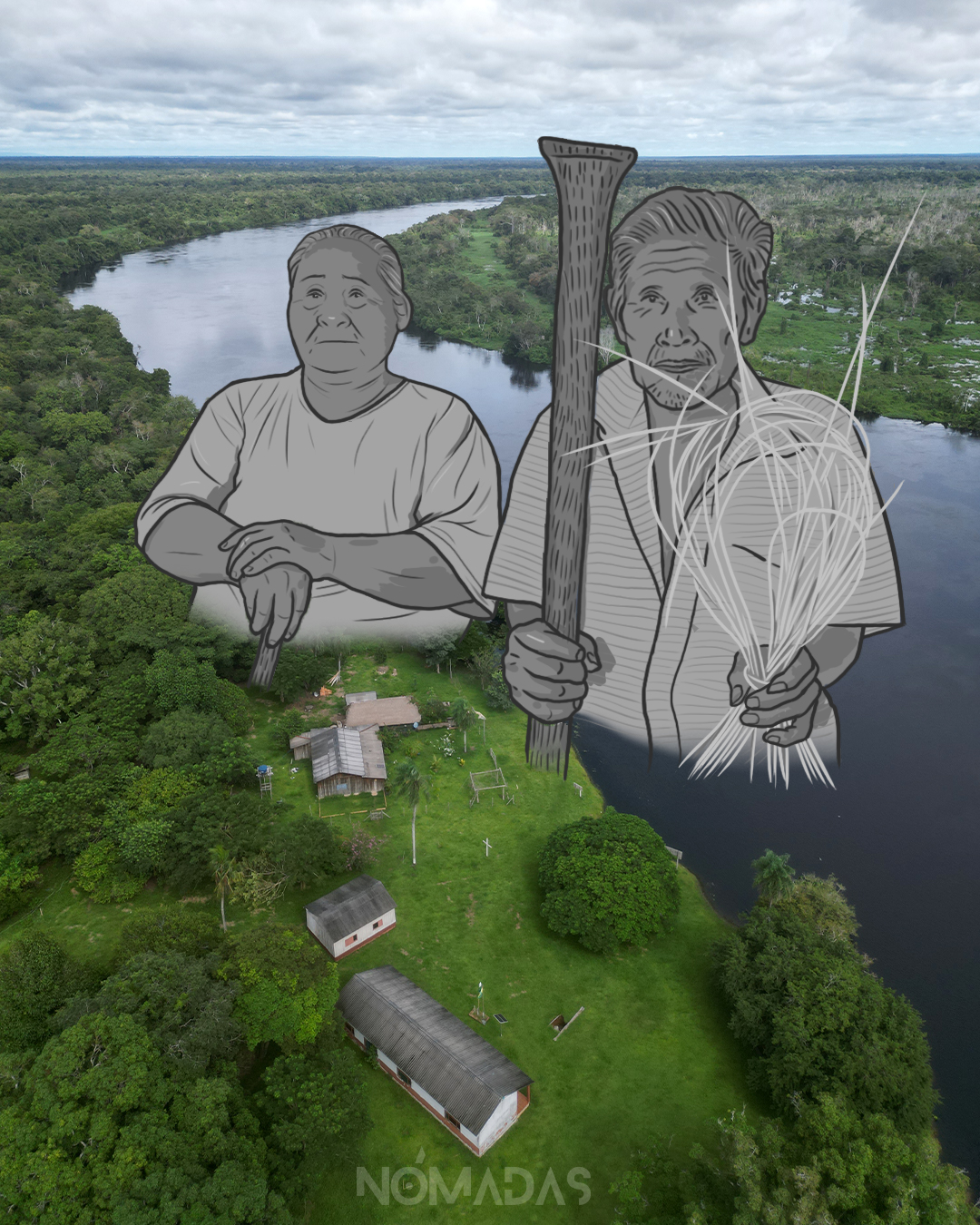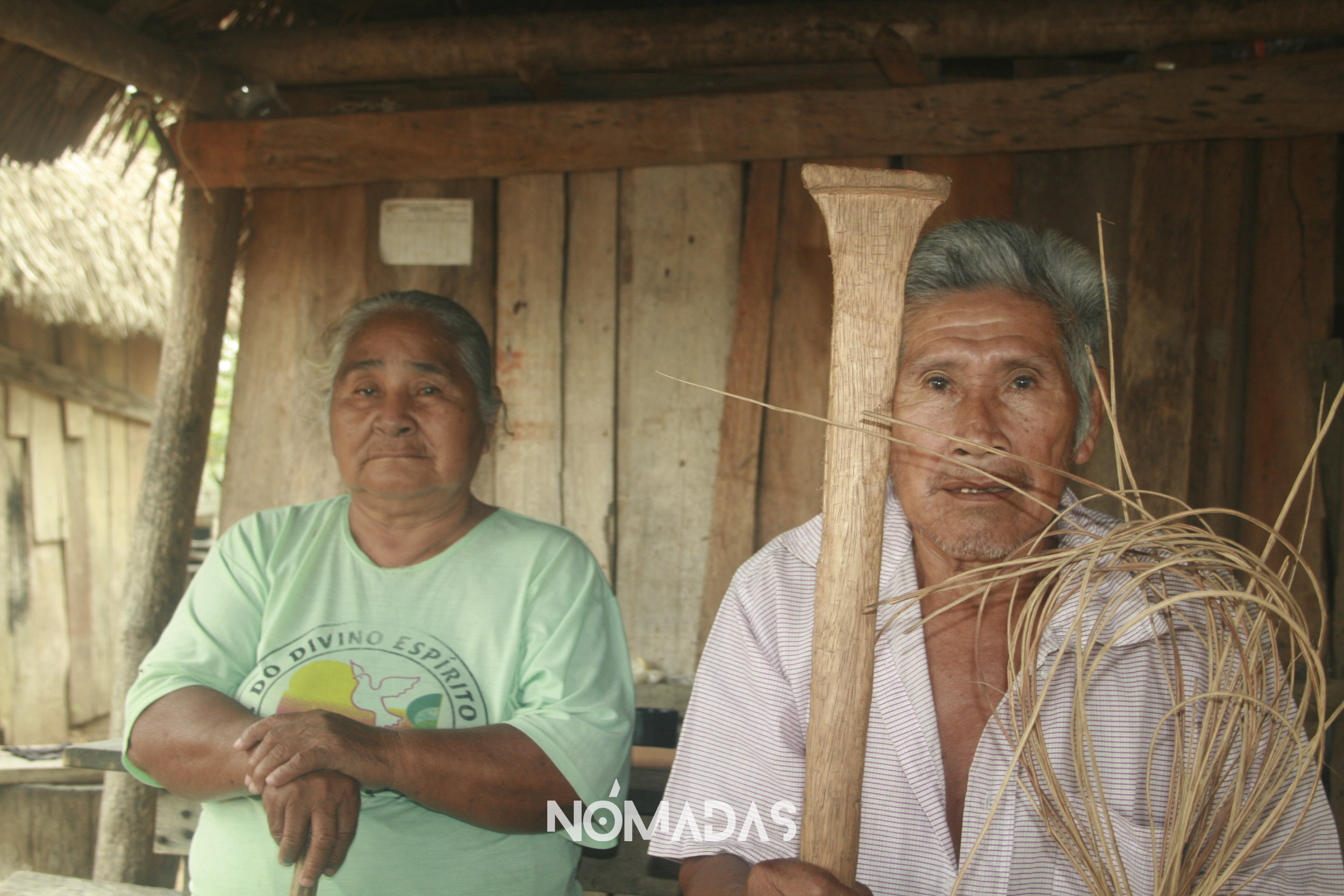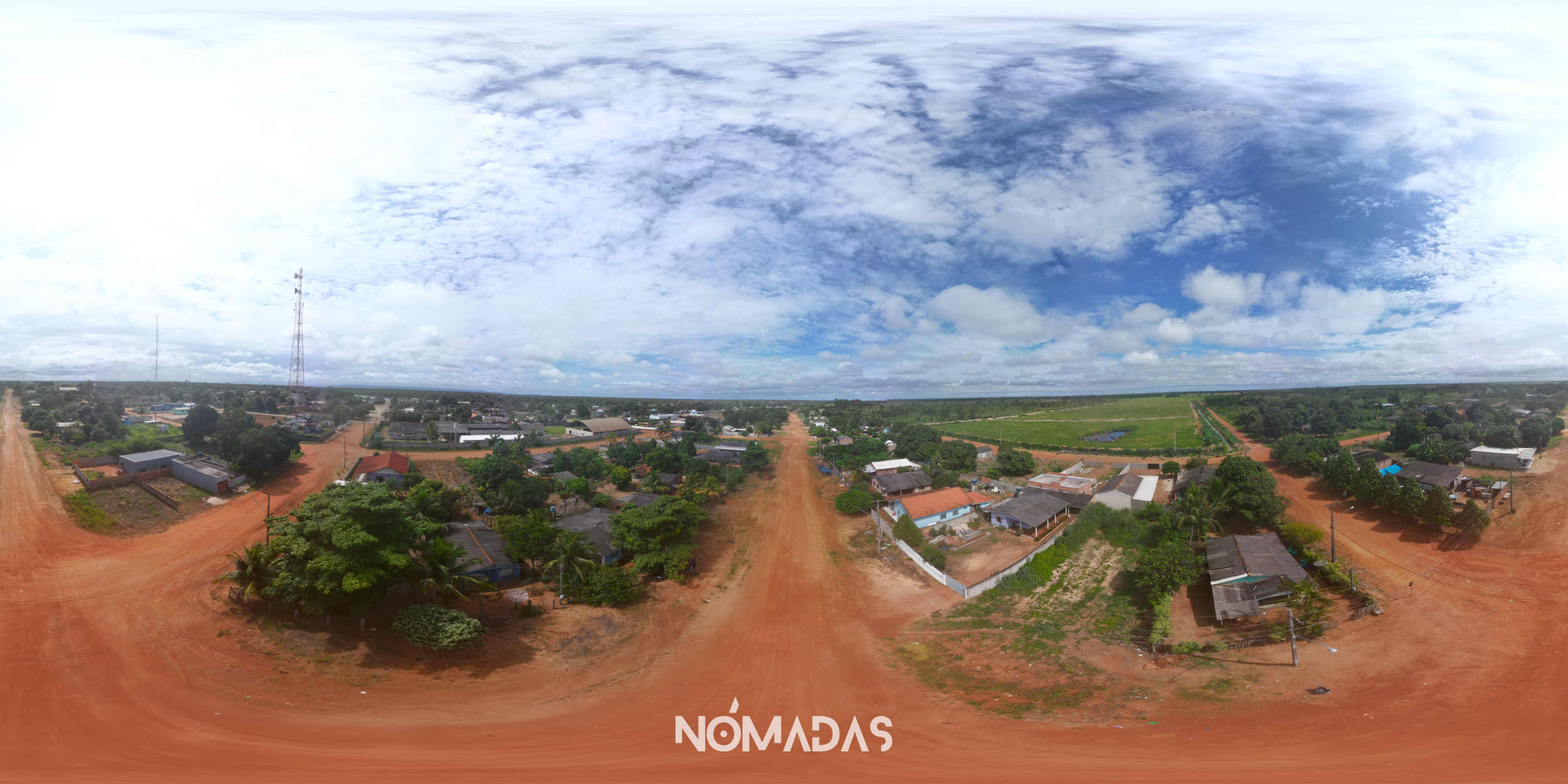TRIBES


TRIBES
The indigenous amazon people whom Yaneramai created from the seed of a pumpkin, are facing difficult days in the territories of Bolivia and Brazil. But the strength of a culture whose accomplice is life without haste is stronger than the threats to their territory.

April 6th, 2023
This story is produced and published with financial support from the Google News Initiative News Equity Fund.
José Frey is lying in his hammock like a gladiator of life who has no accounts with any battle. His body, perhaps a hundred years old, rests like a galleon that conquered the Iténez and other Amazonian rivers in the best days of a youth that, according to his descendants, seemed to last forever.
The Guarasu’wes have no borders. Their presence on Earth is not controlled by the petty boundaries of countries.
It was not until a handful of years ago that he ceased to be the Muruvysa or Captain of the Guarasu’we nation, to become the sage who, from his home in Pimenteiras do Oeste, advises those who remain on how to eternalize the memory of their ancestors, the splendid language with which they told the world and the music that for centuries was fed by the humid winds of the exuberant Amazon.
He himself played the flute with his eyes tightly closed and his feet ready for dances under the moon. He does not have the original flute but he does have a PVC flute that a friend gave him as a small treasure.
Right now he is touching it and a bath of nostalgia is passing through his body to which he does not dare to put a number of years because -the years- for José and his family, are not counted one by one as the fingers of the hands are counted, they are not a line that has a beginning and an end, but, they are intertwined and diverse paths where human beings are illuminated by the seasons that used to arrive on time, by the expected sowings and by the days of bonanza that generated good harvests, hunting and subsistence fishing.
Time, for José, is a friend who sometimes stops to ask him how he is and says goodbye without leaving, because he knows that time is always here, even when the day comes to visit the Big Home, where men arrive after death and where Yaneramai, the Grandfather of all, lives, the one who, as the anthropologist Jürgen Riester wrote, «created man from the seed of a pumpkin», the one who, «sitting on a bamboo stick, came down to Earth and gave man the ‘eternal light‘ that is synonymous with immortality, and taught the Guarasu’wes how they should handle the arrow and bow for hunting».
But that eternal light was lost by men through their own fault and disobedience and now the Guarasu’wes age like the rest of mortals and José may be a hundred years old or a little older. That does not interest him. Nor does it interest Ernestina, his lifelong companion who is now in an adjoining room, resting without haste, because haste has not yet been invented in this nation that refuses to disappear.
The Guarasu’wes live between Bolivia and Brazil along the Iténez or Guaporé river. The language of this indigenous nation is a Guarani descendant language and a member of the Tupi family, spoken by only a few elders in the community. Despite this, they seek to preserve their traditions and knowledge through oral transmission and daily practice.
Although the population that self-recognized as Guarasu’we in the 2001 Bolivian census were only 9 people, this number increased significantly to 125 in the 2012 census, indicating an effort on the part of the community itself to preserve its identity and culture.
In Bella Vista (Bolivia), in the middle of Noel Kempff Mercado National Park, they remember that in the 2001 census very few Guarasu’wes were registered because most of them were either in the forest, hunting, or had gone to Pimenteiras do Oeste (Brazil) to visit a relative or to be treated by doctors who provide better care than in Bolivia.
In Pimenteiras do Oeste there are two streets where several Guarasu’wes families live, one of them is called Bolivia and the other Rio de Janeiro. In the latter is the house of José Ignacio and Ernestina, where they have built a parsimonious home, where time rocks without any hurry, where now the hands of Nilsa, one of their daughters, make handicrafts with seeds of native trees and feathers of wild birds that change their plumage and fall silently in the forest, and where José, their eldest son, learned to take the post as Captain of those who live in Brazil and -therewith- the Freys keep alive the dynasty of leadership that they inherited over the years.
For them, for those who live in Brazil, Riozinho, (State of Rio Grande do Sul, Brazil) is the sacred territory where Muruvysa Miguel is buried, from whom epic stories of defense of the Guarasu’we nation are woven and the Amazon which is the ancestral home since long before the existence of Brazil and Bolivia as countries divided by the mythological Iténez River.

José Frey and his wife, Ernestina, in 2009, at their home in Pimenteiras do Oeste. Photo: Marcelo Arze.
The Guarasu’wes have no borders. Their presence on Earth is not controlled by the petty limits of countries. The memory of the ancients recalls the steps lost in Riozinho (Brazil), memory of this nation of great navigators who, nomadic as they were – as they still are – come and go from Pimenteiras do Oeste (Brazil) to Bella Vista (Bolivia) and even beyond, because by the horizons of Porvenir, Remanso and Picaflor appear the silhouettes of these brothers of the bush.
Despite the border between Bolivia and Brazil, the Guarasu’wes living in both bands maintain a constant relationship because the bond is nurtured throughout the year.
Pedro Pereyra Cuyati is the Captain of the Guarasu’we Nation in Bolivia, where approximately 40 families live in the Community Lands of Origin (TCO in spanish) Bella Vista (Noel Kempff Mercado National Park) and Picaflor (Municipal Protected Area of Bajo Paraguá of San Ignacio de Velasco.
Despite the border between Bolivia and Brazil, the Guarasu’wes living in both bands maintain a constant relationship because the link is nourished throughout the year, since some live during certain seasons in Bolivia and others in Brazil. After all, the Iténez River, far from being an impassable border, is a means of communication that in a couple of hours takes them from Bella Vista to Pimenteiras do Oeste.
Manuela, for example, daughter of José and Ernestina, accompanies her parents for some time, but she does not neglect her home in Bella Vista and her trips are constant aboard a little wooden boat that they call Peke Peke because of the sound generated by the outboard motor that moves at 20 kilometers per hour, calm, without the slavery of time that the Guarasu’wes are not prisoners of because the stress of haste has not yet been invented.
***

Pimenteiras do Oeste (Brazil), home to several Guarasu’wes families. Photo: Karina Segovia.
STAFF:
Direction and Narrative: Roberto Navia.
Investigative Journalist and Transmedia Producera: Lisa Corti.
Production Manager and Drone Photosn: Karina Segovia.
Illustration and infographics: Mariano Arrien-Gomez.
Photograph #3: Marcelo Arze.
Design and web developer: Richard Osinaga.
Te contamos desde el interior de los escenarios de la realidad, iluminados por el faro de la agenda propia, el texto bien labrado y la riqueza poética del audiovisual y de la narrativa sonora, combinaciones perfectas para sentir el corazón del medioambiente y de los anónimos del Planeta.
